Aachen, Germany: The Imperial City of Charlemagne
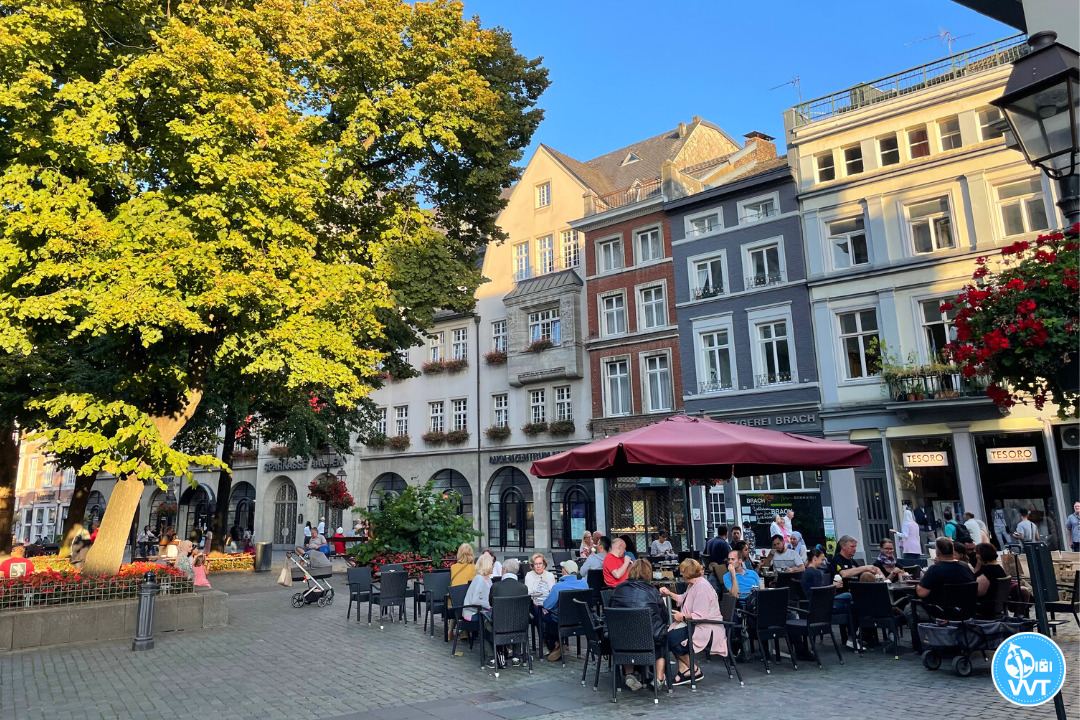
A short history of Aachen
Aachen is the westernmost city in Germany. It belongs to the federal state of North Rhine-Westphalia and lies just a few kilometres from the Dutch and Belgian borders. The origin of its name comes from the Latin word "Aquisgranum", which meant "waters of the Celtic god Granum", a god who was worshipped for the thermal waters that gushed out of the earth. In fact, it was the Romans who built a bath complex here, which was later inherited by the Franks. In other words, the thermal baths of this town have influenced its great history for centuries.
Besides being known as the largest spa centre in western Germany, Aachen's prosperity was also due to the fact that it was the favourite residence of Emperor Charlemagne. Indeed, Charlemagne made Aachen the capital of his empire during his reign. Today it is a lively city, especially for its university students as it has some of the most prestigious universities in Germany.
Where is Aachen and how do I get to Aachen?
Aachen lies entirely in the west of Germany and is very well connected to Belgium (Liège) and the Netherlands (Maastricht), both by motorway and train. From Cologne it is easy to reach Aachen by train, a journey time of only 50 minutes, as well as from Düsseldorf with a journey time of 1.30 hours. Considering that the train service provided by Deutsche Bahn (DB) in Germany is excellent and that you can also access Regional Tickets which can be shared between several people and allow you to move freely around the federal states, we consider that the best option for travelling within Germany is undoubtedly by public transport. Another option is via Frankfurt airport, which is only 2 hours away by train, as well as Maastricht/Aachen airport, which is only 40 km away. Finally, in the widget below you can evaluate different means of transport to get to Aachen from any other city.
What to do in Aachen?
The city has a very interesting historic centre that can be visited in one day. So, if you decide to visit it, here is a list of the 10 most important tourist attractions in Aachen:
-
Elisa Fountain (Elisenbrunnen): this 19th century building, located just a minute away from the Cathedral, is one of the most emblematic places in the city. It is a neoclassical construction that contains one of its famous thermal springs. Its sulphurous water comes from 2 different wells and has a temperature of 52°C. On its outer walls you will find numerous marble plaques listing the names of the most famous visitors. It also houses the town's tourist office.
-
Aachen Cathedral (Aachener Dom): erected in the 8th century by order of Charlemagne, it was at that time the largest cathedral in the northern part of the Alps. As a result of various modifications to its structure over the centuries, today it is a unique blend of architectural styles. Moreover, it was here that kings and queens were crowned for more than 600 years. Interestingly, Charlemagne is said to have been buried in this cathedral, although his original tomb has been lost and his supposed remains still lie there. Finally, Aachen Cathedral was the first monument in Germany to be listed as a UNESCO World Heritage Site.
-
The Puppet Fountain (Puppenbrunnen): in the historic heart of the city lies the Puppet Fountain, without a doubt the best known fountain in Aachen. Created in 1975 by the sculptor Bonifatius Stirnberg, it has different figures with movable joints that represent the traditions of the city: science, horse riding, the textile industry and the carnival.
-
Aachen Town Hall (Rathaus Aachen): it was built in the 14th century in Gothic style on the ruins of the former palace of Charlemagne, although only the left tower and part of the foundations of the former Carolingian palace remain today. It is located on the Market Square (Marktplatz) and is accessible to the public. It has several picturesque rooms, most notably the coronation hall, which has several interesting paintings.
-
Market Square (Marktplatz): this is the main square of the city and here you will find the town hall, some medieval buildings and a fountain with the statue of Charlemagne in the centre. During the Christmas season, this is where the city's Christmas market is held, with the typical wooden houses with food and craft stalls.
-
Charlemagne Centre (Centre Charlemagne): is the city's museum, which offers an insight into the history of Aachen from the formation of the Roman city, through the Carolingian period, the subsequent Napoleonic occupation after the French Revolution to the present day of the city.
-
The Grashaus: is a structure whose construction was completed in 1267, although its foundations are probably older. It is of great historical importance not only because it is one of the oldest buildings in the city, but also because it was the first town hall in Aachen.
-
St. Michael's Church (St. Michael Kirche): built by the Jesuits in 1628, it became a Catholic parish church in 1804. Today it is a Greek Orthodox church, although the building is also used for concerts due to its acoustics.
-
Medieval gates (Ponttor and Marschiertor): remnants of the ancient city walls and defence towers that protected the city of Aachen, the medieval Ponttor gate is located one kilometre northwest of the Cathedral, while the Marschiertor is very close to the central railway station (Hauptbahnhof).
-
Tour to Monschau: Monschau is a small tourist town in the Eiffel region, located in the forests of the Hohes Venn-Eifel nature park. Here you will find the photogenic half-timbered houses typical of this region of Germany. The interesting thing is that it is only 32 km from Aachen. Our recommendation is to rent a car and explore the area freely, the scenery is just breathtaking!
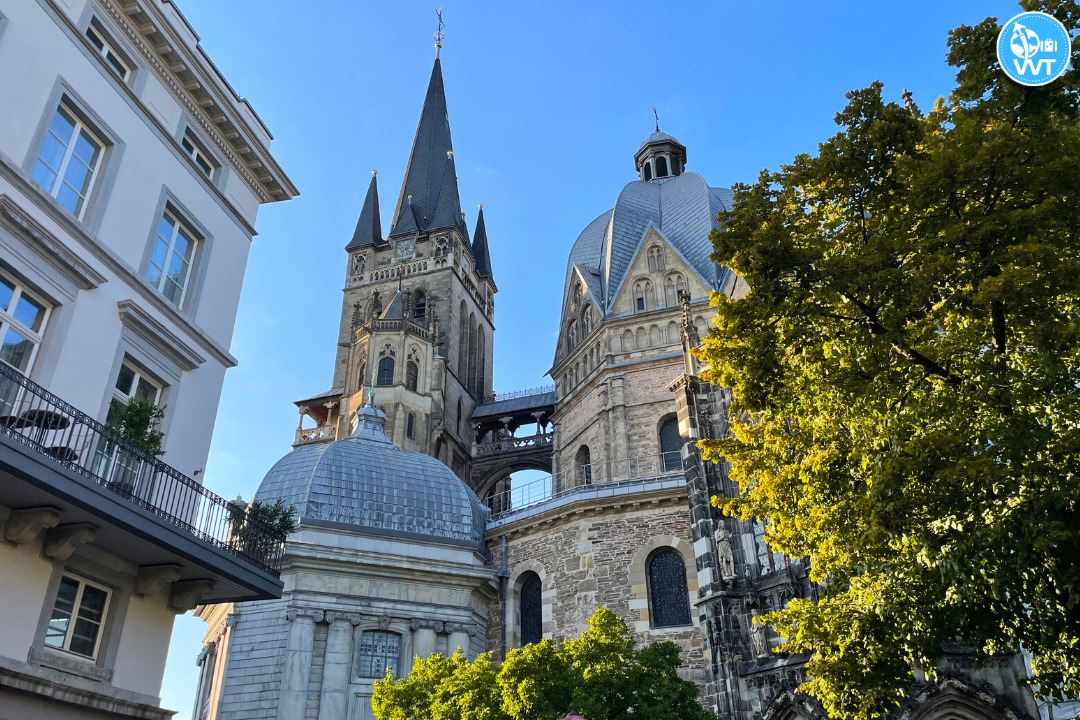
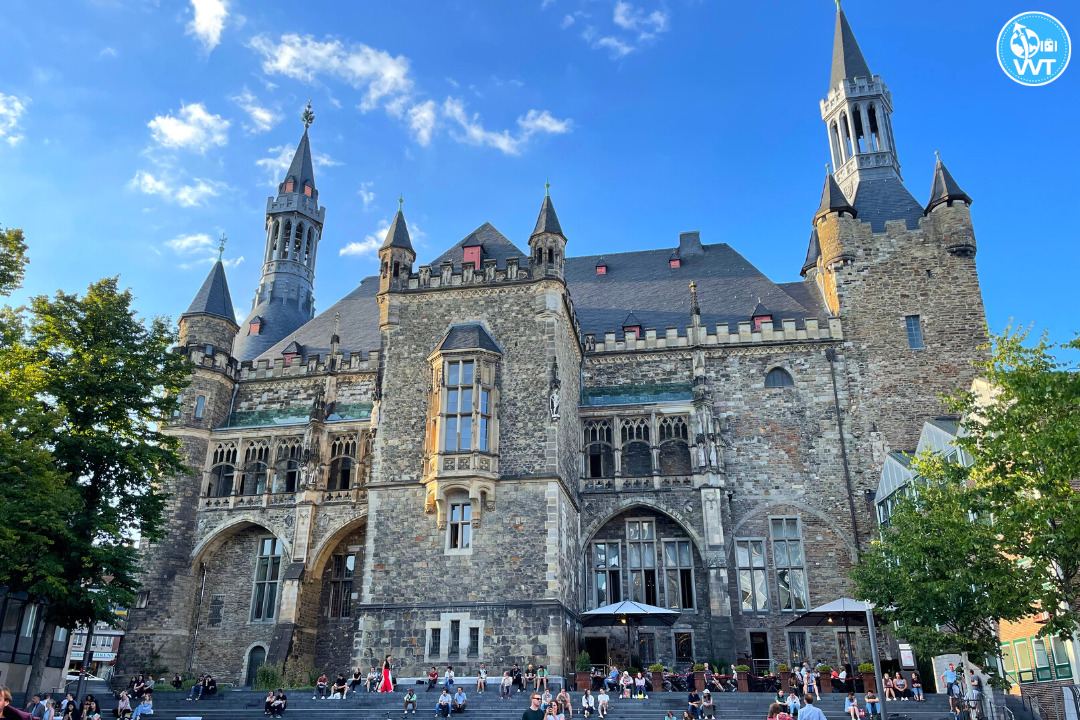
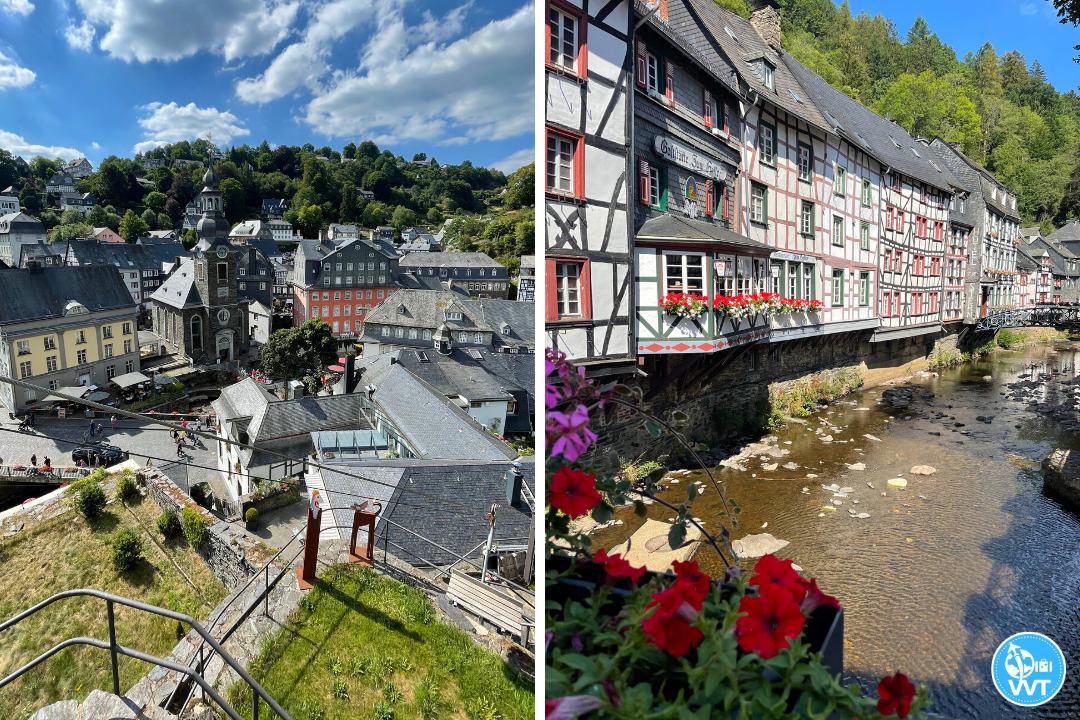
Finally, here is an interactive map of Aachen, where you can easily find the location of each point of interest. Furthermore, by clicking on the markers on the map you can access directly to the paragraph containing the information about that place. Moreover, if you allow us to obtain your geographical location by clicking on the button below the map, you will also be able to see your position and thus find the points of interest around your more easily (reverse search provided by LocationIQ.com).
Where to sleep in Aachen?
Aachen is a perfect city to visit in a day, but if you prefer to enjoy more you prefer to enjoy more of the parks, bars, museums and Monschau then you should stay at least two days. Monschau then you should stay at least two days. For So, if you are looking for a place to stay in Aachen, here we list our favourite our favourite options:
-
Park Apartaments: This flat is located in the heart of the historical centre of Aachen, just a few minutes away from the cathedral. The accommodation features TV, private bathroom, toiletries and kitchen with fridge, microwave and toaster. It is really very complete.
-
Aquis Grana City Hotel: This 4-star hotel is located just 200 metres from Aachen Cathedral and offers spacious, contemporary-style rooms and suites. Breakfast and parking are included in the price and the reception is open 24 hours a day.
-
B&B Hotel Aachen-City: This is a budget option with excellent value for money. It is located just a few metres from the historic city centre and all rooms have a private bathroom. It is worth mentioning that breakfast and parking are not included in the basic price, although they are available at an extra cost.
Gastronomic Specialities
The local speciality is the Aachener Printen, a type of biscuit that originates from the region and although the exact mix of ingredients is a secret, what we can tell you is that they are made with a variety of ingredients, including cinnamon, aniseed, allspice and also ginger. However, in addition to the original Printen, there are others with nuts, marzipan, covered with chocolate or icing and obviously in different shapes, they really are beautiful to look at! Our palate didn't like them very much as we are used to sweeter biscuits, but obviously we suggest you try them.
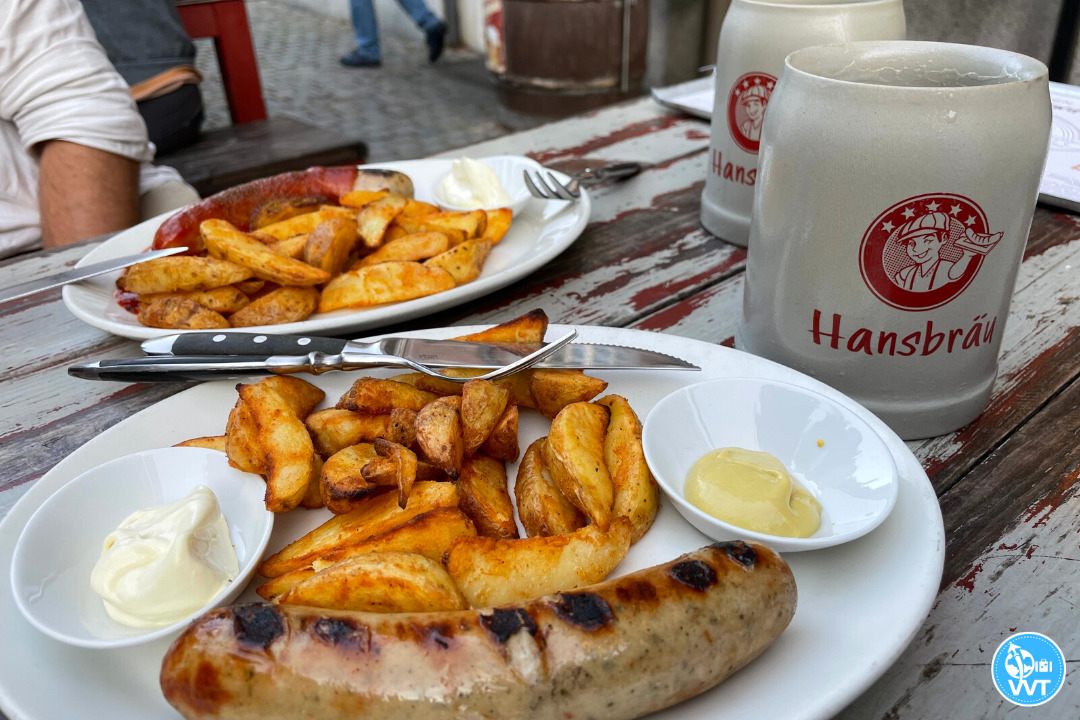
For lunch, we opted for the classic sausage and beer menu. That's why whenever we have the opportunity to visit Aachen we always go to Hanswurst. It is located in the heart of the old town, opposite the Cathedral.
Further information?
Here is our video of Aachen (with English subtitles). If for some reason you encounter any problems with the playback, click here to watch it directly from our YouTube channel.
Thank you very much for making it to the end of this article. If you liked it, don't forget to share it on your social networks by clicking on the icons below. See you next time!



